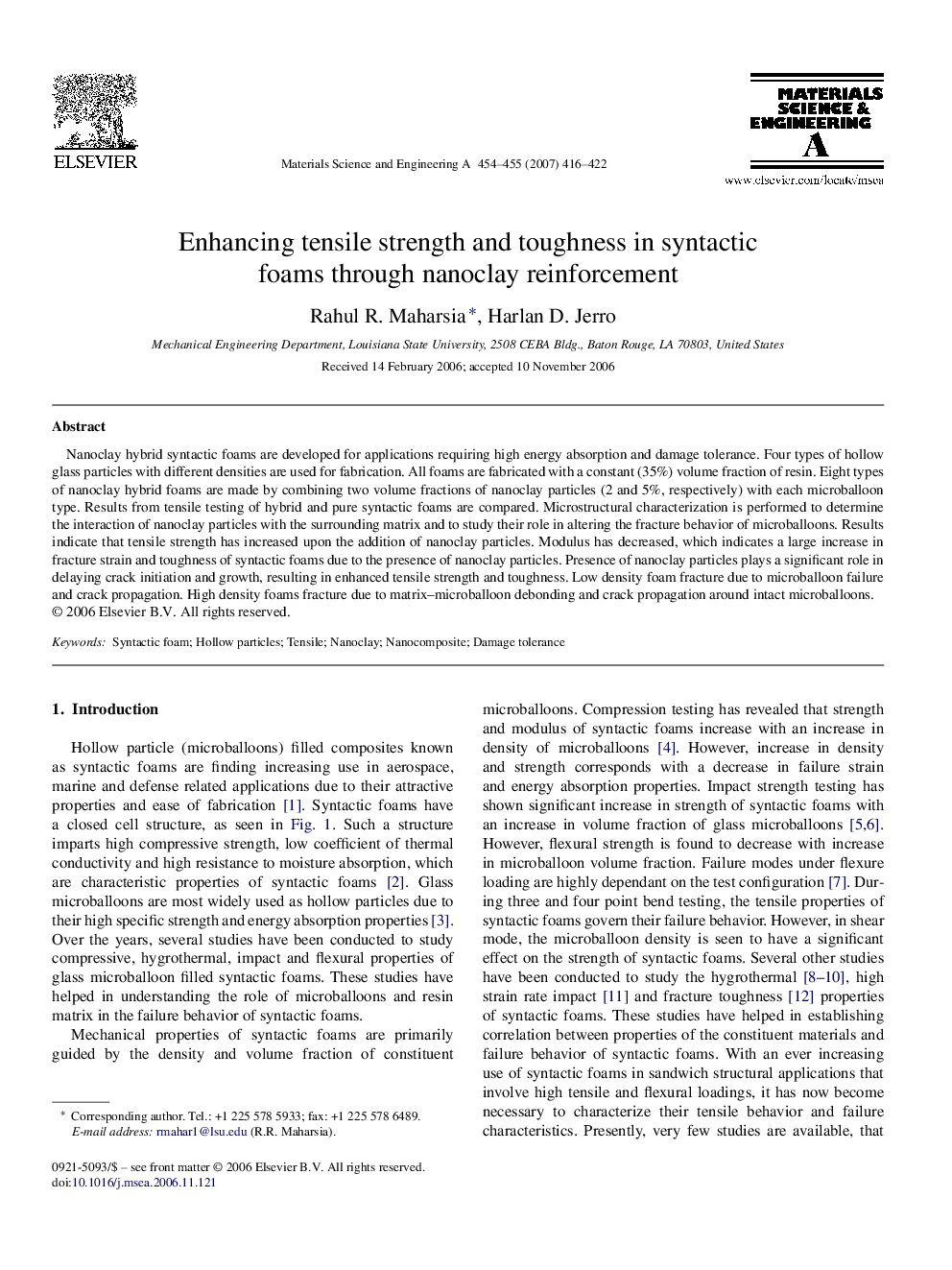| Article ID | Journal | Published Year | Pages | File Type |
|---|---|---|---|---|
| 1584284 | Materials Science and Engineering: A | 2007 | 7 Pages |
Nanoclay hybrid syntactic foams are developed for applications requiring high energy absorption and damage tolerance. Four types of hollow glass particles with different densities are used for fabrication. All foams are fabricated with a constant (35%) volume fraction of resin. Eight types of nanoclay hybrid foams are made by combining two volume fractions of nanoclay particles (2 and 5%, respectively) with each microballoon type. Results from tensile testing of hybrid and pure syntactic foams are compared. Microstructural characterization is performed to determine the interaction of nanoclay particles with the surrounding matrix and to study their role in altering the fracture behavior of microballoons. Results indicate that tensile strength has increased upon the addition of nanoclay particles. Modulus has decreased, which indicates a large increase in fracture strain and toughness of syntactic foams due to the presence of nanoclay particles. Presence of nanoclay particles plays a significant role in delaying crack initiation and growth, resulting in enhanced tensile strength and toughness. Low density foam fracture due to microballoon failure and crack propagation. High density foams fracture due to matrix–microballoon debonding and crack propagation around intact microballoons.
